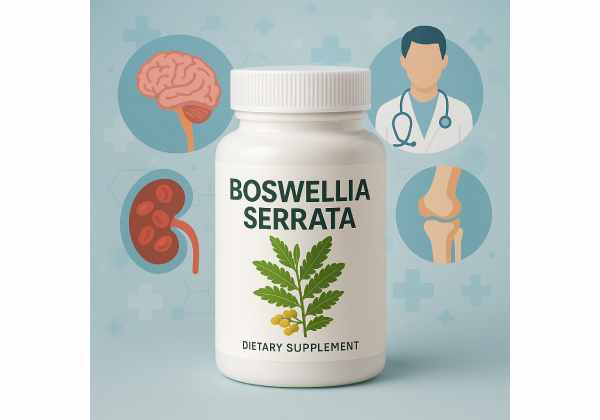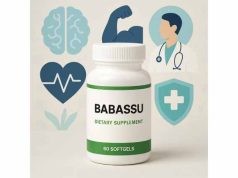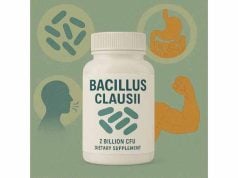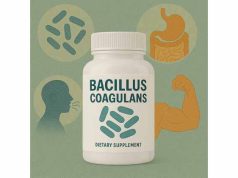
Boswellia serrata, also known as Indian frankincense, is a traditional herbal extract gaining mainstream attention for its natural anti-inflammatory and pain-relieving properties. For centuries, Boswellia resin has been valued in Ayurvedic and folk medicine for supporting joint comfort, reducing swelling, and enhancing mobility. Modern research now confirms Boswellia’s benefits for arthritis, muscle aches, and even some digestive concerns. Its active compounds—called boswellic acids—work differently than standard NSAIDs, offering relief without many common medication side effects. As interest in natural alternatives for pain and inflammation grows, understanding how Boswellia serrata works, its proven uses, optimal dosages, and possible risks can help you make an informed decision for your health and wellness.
Key Takeaways
- Potent Natural Anti-inflammatory: Boswellia serrata helps ease joint pain and swelling, especially in arthritis, by blocking inflammatory enzymes.
- Supports Joint and Cartilage Health: Regular use may improve mobility and flexibility in those with osteoarthritis or rheumatoid arthritis.
- Digestive and Respiratory Benefits: Boswellia may soothe symptoms of inflammatory bowel diseases and support lung health.
- Generally Well-Tolerated: Most users experience minimal side effects compared to synthetic anti-inflammatories, though mild digestive upset is possible.
- Best Used Consistently: Benefits build with daily use—quality, standardized extracts are most effective.
Table of Contents
- Boswellia serrata History, Traditional Uses, and Modern Relevance
- How Boswellia serrata Works: Biological Actions and Mechanisms
- Top Health Benefits & Evidence-Based Uses of Boswellia serrata
- Boswellia serrata Safety Profile, Possible Side Effects, and Interactions
- Boswellia serrata Dosage Recommendations, Forms, and Usage Tips
- Boswellia serrata FAQ: Your Top Questions Answered
Boswellia serrata History, Traditional Uses, and Modern Relevance
Boswellia serrata has a deep-rooted history in natural medicine, stretching back thousands of years in both Indian Ayurveda and Middle Eastern healing traditions. The tree, native to the dry hills of India, North Africa, and the Middle East, exudes a fragrant resin—commonly called “frankincense”—that has been used for religious rituals, perfumery, and medicinal purposes alike.
Traditional Uses in Ancient Medicine
- Ayurvedic Practice: For centuries, Boswellia resin has been ground into powders, tinctures, and pastes to treat joint pain, inflammatory disorders, and wound healing. Ayurvedic texts highlight its use for “vata” imbalances (involving pain and swelling), making it a go-to for arthritis and muscle aches.
- Middle Eastern and African Traditions: Frankincense resin was chewed, burned as incense, or used in balms to purify, calm the mind, and ease discomfort. Its use in rituals symbolized cleansing and renewal.
Early Scientific Observations
- Ancient healers observed that Boswellia could quickly reduce swelling and support quicker recovery from injuries. This led to its use in both chronic and acute inflammatory conditions, such as gout, back pain, and even digestive upset.
Modern Discovery and Commercialization
- Standardized Extracts: In the past few decades, scientists have isolated the primary bioactive compounds—boswellic acids—and developed standardized extracts for more reliable dosing and results.
- Popularity in Natural Health: Boswellia supplements are now widely available, especially in joint, pain, and anti-inflammatory formulas.
Contemporary Uses and Scientific Interest
- Boswellia’s use has expanded beyond traditional applications. Now, it’s not only used for arthritis and muscle pain but also for:
- Inflammatory Bowel Diseases: Such as Crohn’s disease and ulcerative colitis.
- Asthma and Respiratory Support: By reducing airway inflammation.
- Sports Recovery: Many athletes use it for muscle soreness and faster injury recovery.
- Skin Health: Occasionally applied topically in balms or ointments for wounds and irritations.
Sustainable Harvest and Environmental Impact
- Harvesting Boswellia resin is a delicate process. Over-harvesting threatens the survival of some Boswellia species. Leading supplement brands now support sustainable, ethical sourcing to protect these valuable trees and their ecosystems.
Why Boswellia serrata Remains Relevant
- With a track record of traditional use, growing clinical evidence, and fewer side effects compared to synthetic pain relievers, Boswellia serrata stands out as a natural alternative for long-term inflammatory and joint health support.
How Boswellia serrata Works: Biological Actions and Mechanisms
Boswellia serrata’s unique health properties stem from its complex mixture of boswellic acids and other phytochemicals. Understanding these biological mechanisms sheds light on why this herb is so effective for inflammation and pain.
1. Blocks Inflammatory Pathways
- 5-Lipoxygenase (5-LOX) Inhibition: Boswellic acids, especially AKBA (acetyl-11-keto-β-boswellic acid), inhibit 5-LOX, an enzyme that triggers the body’s main inflammatory pathways. This action reduces leukotriene production, which is involved in swelling, pain, and tissue damage in arthritis and asthma.
- Non-COX Pathway: Unlike NSAIDs (like ibuprofen), Boswellia doesn’t block the COX pathway, so it avoids many of their stomach and heart-related side effects.
2. Reduces Joint Breakdown and Cartilage Loss
- Prevents Cartilage Degradation: Boswellia helps slow the enzymes that degrade cartilage, protecting joints in osteoarthritis and other degenerative conditions.
- Enhances Cartilage Repair: Some research suggests it may help stimulate the rebuilding of joint tissue, though more studies are needed.
3. Antioxidant and Cellular Protection
- Neutralizes Free Radicals: Boswellia has antioxidant properties that help protect cells from oxidative stress, supporting overall health and reducing further tissue damage.
- Reduces Swelling: By limiting inflammatory markers, Boswellia can minimize joint and tissue swelling, improving mobility and comfort.
4. Supports Gut and Respiratory Health
- Stabilizes Gut Lining: Boswellia’s anti-inflammatory actions help soothe the digestive tract, easing symptoms of ulcerative colitis and Crohn’s disease.
- Opens Airways: In asthma and bronchitis, Boswellia helps reduce inflammation in the lungs, supporting easier breathing.
5. Immune Modulation
- Balances Immune Response: By calming overactive immune activity, Boswellia may help manage autoimmune and inflammatory conditions without suppressing healthy immunity.
Bioavailability Considerations
- Absorption: Boswellia extracts are fat-soluble. Taking them with a meal or healthy fat can boost absorption.
- Standardization: Look for extracts standardized to at least 65% boswellic acids (including AKBA) for consistent, effective results.
Why Boswellia’s Mechanism Matters
- By working through unique anti-inflammatory and antioxidant pathways, Boswellia serrata provides symptom relief and long-term tissue support—without the risks of conventional pain drugs.
Top Health Benefits & Evidence-Based Uses of Boswellia serrata
Boswellia serrata is one of the most widely researched and trusted herbal remedies for inflammation, joint pain, and more. Here’s how it can make a difference:
1. Joint Health and Osteoarthritis
- Reduces Joint Pain and Stiffness: Multiple clinical studies show that Boswellia can significantly decrease joint discomfort and improve mobility in people with osteoarthritis and rheumatoid arthritis.
- Improves Function: Many users experience less morning stiffness and better movement after 4–12 weeks of daily use.
- Cartilage Protection: By reducing enzymes that break down cartilage, Boswellia preserves joint structure, which is vital for long-term joint health.
2. Anti-Inflammatory Support for Chronic Conditions
- Arthritis Relief: Particularly useful for knee, hip, and hand arthritis, with fewer gastrointestinal side effects than NSAIDs.
- Back and Muscle Pain: Helps relieve chronic back pain, muscle soreness, and sports injuries.
3. Gut Health and Inflammatory Bowel Diseases
- Eases Colitis and Crohn’s Symptoms: Some research supports Boswellia for reducing abdominal pain, diarrhea, and bleeding in ulcerative colitis and Crohn’s disease.
- Supports Gut Lining: Its calming effect on gut inflammation promotes better digestion and nutrient absorption.
4. Respiratory Wellness
- Asthma and Bronchitis: Boswellia’s anti-inflammatory action can decrease asthma attacks and improve breathing in chronic bronchitis.
- Sinus and Allergy Support: May reduce sinus swelling and congestion, supporting clearer breathing.
5. Brain and Mood Support
- Neuroprotective Potential: Early studies show Boswellia may help protect brain cells from inflammation and oxidative stress, with potential benefits for mood, focus, and memory.
- Adjunct for Neurological Disorders: Being studied for its role in managing symptoms of multiple sclerosis and Alzheimer’s.
6. Skin and Wound Healing
- Topical Uses: Traditionally, Boswellia resin has been applied to wounds, ulcers, and irritated skin to speed healing and reduce redness.
Who Benefits Most from Boswellia serrata?
- Adults with arthritis, chronic pain, or sports injuries.
- Those seeking natural alternatives to NSAIDs for long-term use.
- Individuals managing IBD, asthma, or chronic respiratory issues.
- People looking for holistic support for joint, gut, or brain health.
Limitations and When Results Appear
- Builds Gradually: Boswellia is not an instant painkiller—most benefits become apparent after several weeks of consistent use.
- Works Best in Combination: Combining Boswellia with other joint or gut-supportive herbs and nutrients can enhance results.
Boswellia serrata Safety Profile, Possible Side Effects, and Interactions
Boswellia serrata is generally considered safe when used in recommended amounts, but it’s still important to be aware of potential side effects and interactions. Here’s what you need to know to use Boswellia wisely and get the most benefit with the least risk.
General Tolerability
- Most users tolerate Boswellia supplements very well. Its safety track record, especially compared to standard NSAIDs (non-steroidal anti-inflammatory drugs), is one of the reasons for its popularity in natural medicine.
- Traditional preparations have been used for thousands of years with few reported problems, but modern extracts are more concentrated—so understanding dosing is crucial.
Possible Side Effects
While rare, side effects may occur, especially at higher dosages or with sensitive individuals:
- Digestive Upset: Some people may experience mild nausea, stomach cramps, diarrhea, or acid reflux.
- Allergic Reactions: Rarely, Boswellia can trigger skin rashes, itching, or other allergic responses.
- Headache or Dizziness: Uncommon, but some users report mild headaches or a sense of dizziness with first-time use or higher doses.
- Menstrual Changes: Very occasionally, Boswellia may influence menstrual flow, given its effects on blood circulation.
Minimizing Risk
- Start Low, Go Slow: Begin with the lowest suggested dose and increase gradually as tolerated.
- Take with Food: Ingesting Boswellia with meals can help prevent digestive discomfort.
- Monitor for Reactions: If you notice any persistent side effects, stop use and consult your healthcare provider.
Who Should Use Caution?
- Pregnant and Breastfeeding Women: There’s insufficient safety data. Avoid use unless specifically advised by a qualified healthcare provider.
- People with Bleeding Disorders or on Blood Thinners: Boswellia may affect blood clotting—use caution and seek medical advice.
- Autoimmune Conditions: Although Boswellia helps modulate immune response, those with complex autoimmune disorders should consult a practitioner to ensure it fits their individual health needs.
Potential Drug and Supplement Interactions
Boswellia is less likely to interact with medications than many herbal extracts, but always be cautious if you’re taking:
- Blood Thinners (e.g., warfarin, aspirin): Boswellia’s effect on circulation could theoretically enhance blood-thinning effects.
- Anti-Inflammatory Medications: Using Boswellia alongside prescription NSAIDs or corticosteroids is typically safe, but discuss this combination with your doctor to adjust doses if needed.
- Other Herbs/Supplements: Especially those with anti-inflammatory or blood-thinning actions (turmeric, ginger, ginkgo biloba).
Safety in Long-Term Use
- Most studies on Boswellia serrata last 8–24 weeks, with excellent safety results. Some traditional users take Boswellia for months or even years, but ongoing medical monitoring is recommended for extended use.
- No evidence links Boswellia with liver or kidney toxicity at typical supplement doses.
Recognizing and Responding to Side Effects
- Mild Symptoms: If digestive upset or mild skin rash occurs, lower the dose or take a break before resuming at a lower level.
- Serious Reactions: In the event of severe allergic reaction (trouble breathing, swelling, severe rash), seek emergency care immediately.
- Routine Checks: If you’re using Boswellia long-term, regular check-ins with your healthcare provider are wise, especially if you have underlying conditions or are taking multiple medications.
Summary
- Boswellia serrata is generally safe and well-tolerated.
- Most side effects are mild and infrequent.
- Caution is needed for pregnant women, those on blood thinners, and people with allergies.
- Use high-quality, standardized extracts for the best safety and efficacy.
Boswellia serrata Dosage Recommendations, Forms, and Usage Tips
Finding the right Boswellia serrata dosage and choosing an effective supplement form are key to achieving the best results with minimal risk. Below you’ll find evidence-based guidelines to help you use Boswellia safely and successfully.
Recommended Dosage for Different Health Goals
- General Joint Health & Osteoarthritis: Most clinical studies use 300–500 mg of standardized extract (containing 60–65% boswellic acids) two to three times daily. This totals 600–1,500 mg daily.
- Inflammatory Bowel Disease (IBD): Doses of 300–400 mg, two or three times per day, have shown promise for Crohn’s and ulcerative colitis.
- Asthma & Respiratory Support: Typical regimens are similar—300–400 mg two to three times daily.
- Topical Use: Boswellia creams and balms may be applied directly to sore joints, muscles, or irritated skin as needed.
Supplement Forms
- Capsules/Tablets: The most common and convenient, usually containing concentrated extract.
- Powders: Can be mixed with food or drink but may have a strong herbal taste.
- Tinctures: Liquid extracts absorbed quickly; dosage depends on product concentration.
- Topical Creams: Useful for direct application to joints or skin.
How to Choose a Quality Boswellia Supplement
- Standardization: Look for products specifying at least 60–65% boswellic acids, and ideally, a known content of AKBA (the most active boswellic acid).
- Third-Party Testing: Opt for brands with purity, potency, and safety testing.
- Avoid Fillers/Additives: Choose supplements with minimal unnecessary ingredients.
Best Practices for Supplementation
- Start Low, Increase Gradually: Especially if you’re new to Boswellia or sensitive to herbs.
- Take with Meals: Helps absorption and minimizes potential stomach upset.
- Combine for Synergy: Boswellia pairs well with turmeric, ginger, or omega-3s for joint and inflammation support.
- Be Patient: Benefits typically build over 2–8 weeks; consistency matters more than quick fixes.
Stacking and Cycling
- Stacking: Safe to combine with most standard joint-support supplements, but always check for possible interactions.
- Cycling: Some users prefer taking Boswellia for 8–12 weeks, then pausing for 2–4 weeks, especially for long-term use.
When to Consult a Healthcare Provider
- If you are pregnant, breastfeeding, on prescription medication, or managing chronic health conditions.
- If you plan to use Boswellia for extended periods or at higher-than-standard doses.
Who Might Not Need to Supplement?
- Individuals with mild, occasional joint or muscle aches may do well with lifestyle changes alone.
- Those already taking potent anti-inflammatories or blood thinners—consult before adding Boswellia.
Quick Dosage Recap
- 300–500 mg standardized extract, 2–3 times daily, is effective and safe for most uses.
- Begin with a lower dose if you’re sensitive or new to herbal supplements.
Boswellia serrata FAQ: Your Top Questions Answered
What is Boswellia serrata best used for?
Boswellia serrata is mainly used for relieving joint pain, reducing inflammation, and improving mobility in arthritis. It also supports gut and respiratory health.
How long does it take for Boswellia serrata to work?
Most people notice benefits within 2 to 8 weeks of daily use, with full effects for joint or gut health developing gradually over time.
Is Boswellia serrata safe for long-term use?
Yes, it’s generally safe for long-term use at recommended doses, but regular check-ins with your healthcare provider are advised, especially if you take other medications.
Can you take Boswellia serrata with other supplements?
Boswellia is often combined with turmeric, ginger, or omega-3s for enhanced anti-inflammatory effects. Always consult your doctor if you are on prescription medication.
Are there any side effects to Boswellia serrata?
Most people tolerate Boswellia well. Rare side effects may include mild stomach upset, skin rash, or, in sensitive individuals, headaches or dizziness.
What’s the best form of Boswellia supplement?
Capsules with standardized extracts (60–65% boswellic acids) are most reliable. Topical creams can help with local pain, and tinctures are also available for fast absorption.
Can Boswellia serrata help with asthma or Crohn’s disease?
Research shows promise for both conditions. Boswellia can help reduce airway inflammation in asthma and support gut lining health in Crohn’s disease and ulcerative colitis.
Disclaimer:
This article is for informational purposes only and does not constitute medical advice. Always consult your healthcare provider before starting any new supplement, especially if you are pregnant, breastfeeding, on medication, or have any underlying medical conditions.
If you found this Boswellia serrata guide helpful, please share it on Facebook, X (formerly Twitter), or your favorite social network—and follow us for more wellness insights. Your support allows us to keep delivering research-backed content for your health journey!










